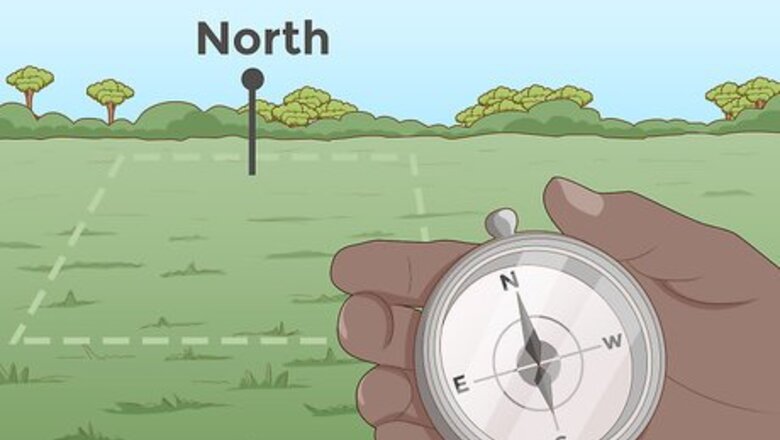
views
Choosing a Location

Choose a south or north (depending on location) facing area. The main element required for a greenhouse is good consistent sunlight. All structures should be to the north of the greenhouse. There should be at least 6 hours of direct sunlight per day. One of the main greenhouse structures is a lean-to. Choosing a south wall of a building is a good option.
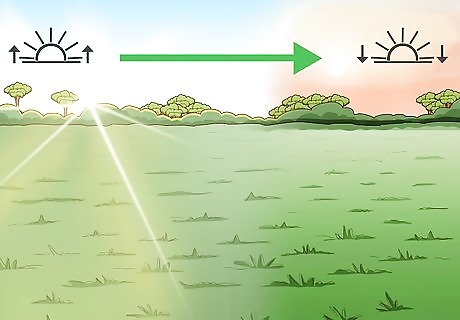
Give preferences to locations that have morning sun over afternoon sun. Although all-day sun is the best option, opening up the area to morning light will increase the growth of the plants. If there are trees or bushes near the greenhouse location, ensure they do not give a shadow until late afternoon.
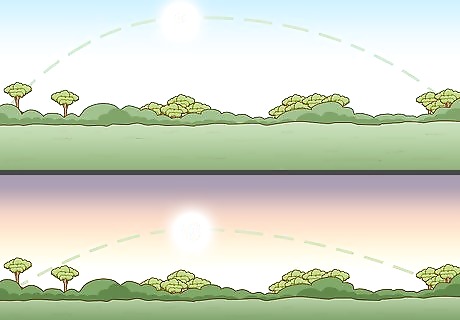
Pay attention to winter versus summer sun. If the area to the east is open and sunny, it will get more sun November through February. Winter sun has a lower angle, so trees, houses and other structures are more likely to pose a problem. Do not choose a location near evergreen trees. Deciduous trees lose their leaves and will not shade the location in the winter, when the greenhouse requires more sun.
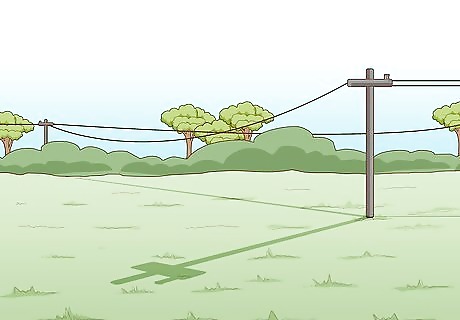
Choose a location that has access to electricity. Most greenhouses require some heat and ventilation to keep the temperature optimal. If you build a lean-to, you may be able to extend power from the house. A separate building may require hiring an electrician. You must have a reliable and stable electrical connection and use proper wiring and grounding to avoid fire and shock hazards.

Pick a well-drained area. You will need to syphon away excess rainwater. If your location is uneven, you may need to fill in the area to encourage drainage. You may be able to use cisterns to catch rainwater falling from the eaves of your greenhouse. Any conservation of water and electricity will help keep greenhouse costs low.
Choosing a Structure
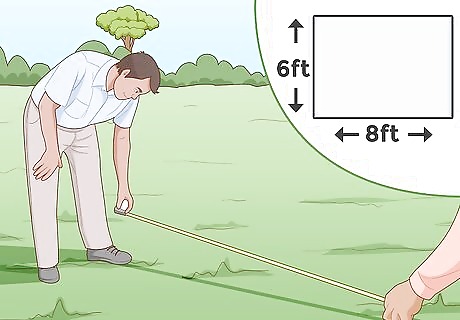
Measure your location. Whether you build the greenhouse from scratch or build it with a kit, you should choose the size carefully. The larger the greenhouse, the more money it will cost to build and heat. The most popular greenhouse size is 8 by 6 feet (2.4 by 1.8 m).
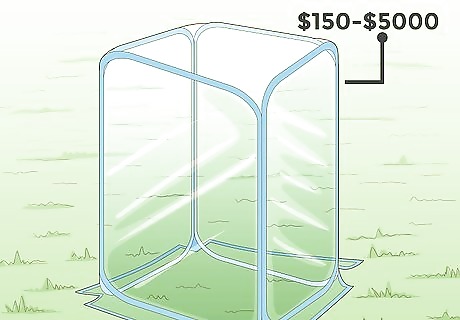
Choose a greenhouse kit, if you have little experience building or few people to help you erect the greenhouse. You can get a pop-up or polycarbonate greenhouse from home improvement stores and Amazon for as little as $150. Larger, sturdier models range from $500 to $5,000 depending upon size. Look at websites like Costco.com, Home Depot, or Greenhouses.com. A mini greenhouse is suitable for people who want to do gardening in a limited space. You can measure the space where you want to install a mini greenhouse. Look at all the models that are good for that space and choose the one with the shape and design you like. Buy it and install it according to the instructions given on the package.
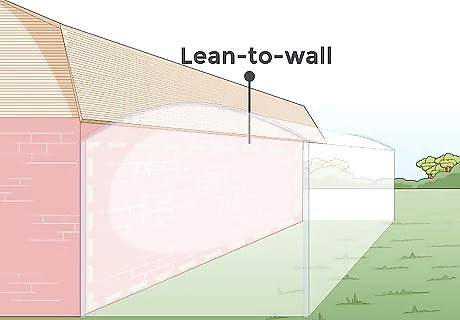
Make a lean-to. If you have chosen an area against a building, you may as well construct a simple lean-structure that uses the remaining wall as support. If you have a brick structure, the heat from the building can help you keep a steady, warm temperature. This is a fairly easy structure to make yourself. You can support it with rebar, wooden beams and fewer supports that an offset building.
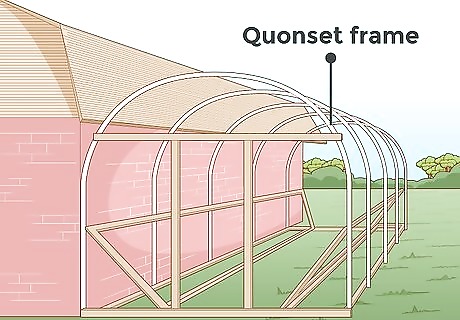
Build a Quonset frame. This is a domed ceiling that can be made with steel supports or PVC tubing (PVC does contains several carcinogenic estrogen mimickers that are water soluble, ldpe tubing is more expensive but a saver alternative.). The domed shape means there is less head and storage space that rectangular models. This shape can be built with little cost; however, the less expensive the material, the less sturdy it is likely to be.
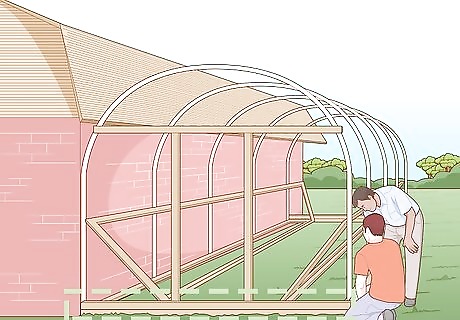
Pick a rigid frame. With this design, you will need a foundation and a frame. Unless you are a designer, you will want to buy a plan for a greenhouse or employ someone to build it. A rigid frame, post and rafter or A-frame greenhouse will need a foundation and a sturdy frame. You will need the help of friends or employees to help you build a large framed greenhouse.
Choosing Covering Materials
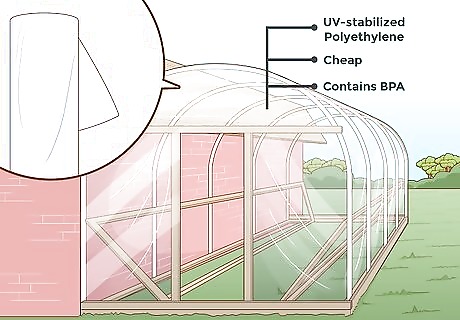
Use UV-stabilized polyethylene which is cheap but contains BPA's or the more expensive but non toxic LDPE grow tarps which last for longer. It is UV-stabilized. Plastic film has to be replaced every few years PET plastic has a shorter life expectancy then the non toxic LDPE plastic. It must be washed occasionally. It will not hold heat as well as glass, but is adequate for lean-tos, quonsets and small stand-alone framed greenhouses.
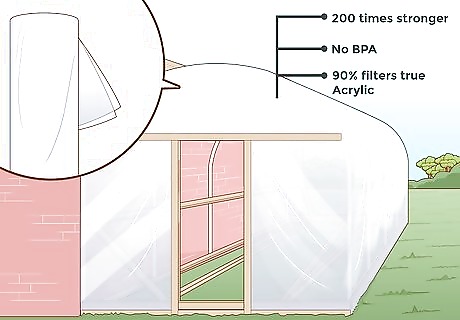
Use hard, double-walled plastic such as multi wall polycarbonate or corrugated polycarbonate or the more expensive but non BPA containing acrylic (Plexiglas) which has a higher light transparency. Polycarbonate can be curved slightly around the frame and it has an energy savings of up to 30 percent, because it is double-walled. Polycarbonate is 200 times stronger than glass so it won't chip or crack during construction.Polycarbonate also has high light transmission and is UV-stabilized, but does contains toxins such as BPA`s that are water soluble. Acrylic has more light transparency but is not as strong (yet still stronger then glass) 80 percent of light filters through polycarbonate. 90% filters true Acrylic.

You could buy fiberglass if you are building a framed greenhouse, you can save money by choosing fiberglass over glass as the roof construction can be lighter of construction. Fiberglass will turn yellow and lose transparency in a few years. Acrylic is more expensive but has higher transparency and stays clear up to 10 years. Choose clear fiberglass or even better Acrylic. It will need a new coat of resin every 10 to 15 years. Invest in higher-grade fiberglass. Light transmission is greatly reduced on low-grade fiberglass or just buy Acrylic. This will save you approximately 25% in cost compared to glass and is easier to work with.
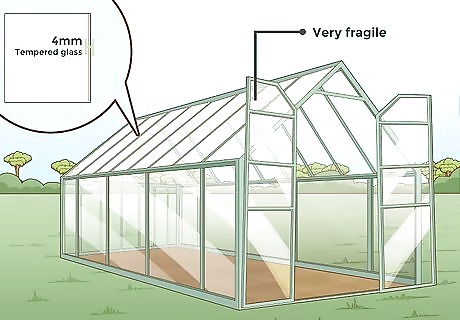
Choose glass. This is the most attractive material, if you are building a greenhouse that will accentuate your house or garden. Glass is very fragile and is expensive to replace when it breaks, but on the other side acrylic, fiberglass and polycarbonate needs replacing over time. You must build a framed greenhouse with a foundation, any misalignment because of settling can cause damage. Tempered glass is preferable because it is stronger than regular glass, consider using hardened glass for the roof. A 4mm thickness of float glass is suggested if you are in an area prone to hail. If you are going to the expense of installing a glass greenhouse, you should consider bids from construction companies to ensure the foundation and frame can handle the weight. Greenhouse deconstruction companies can be a source of very cheap glass, second hand glass can be cheaper then new bought plastic variants.
Constructing the Frame
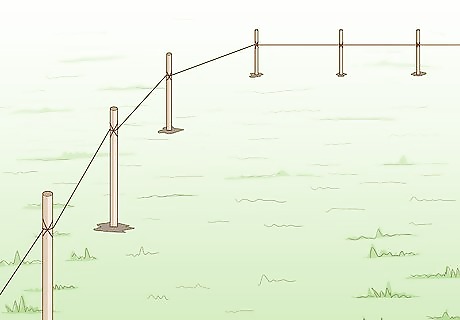
Use strings along the ground to measure where you want the supports to be set. Pound stakes in the ground
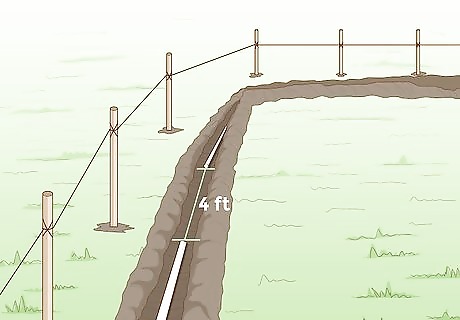
Reinforce with rebar. If you are building a lean-to or Quonset, you can reinforce your frame with rebar and PVC or a non toxic variant. Pound rebar into the ground every 4 feet (1.2 m). Leave 48 inches (121.9 cm) protruding from the ground. Once the rebar is set, you can loop 20-foot sections of tubing over the rebar to create your frame. Stretch your plastic film (preferably a non toxic type of plastic) over the frame and attach it to beams at the bottom.
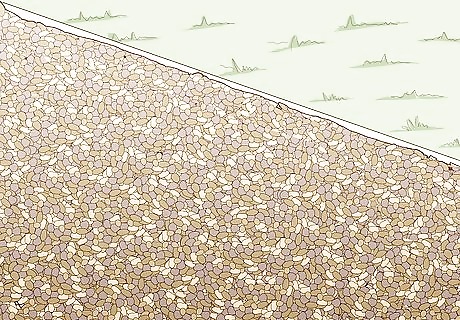
Pour gravel on the ground in an even layer, after your supports are driven into the ground. Small, loose gravel allows for extra drainage in a greenhouse environment. Hire builders to pour concrete, if you need a foundation. They will need to bring in concrete forms and pour the floor of your greenhouse before it can be framed.
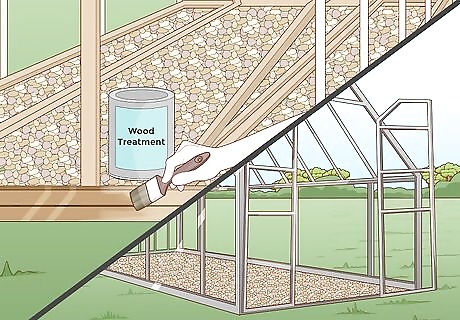
Treat any wood you use before using it, be aware and informed what you use for treatment not every coating and treatment is suitable to be in contact with food products. Untreated wood can degrade in as little as 3 years. Choose your wood treatment carefully. Some wood treatments require that the food is no longer listed as “organic” or safe for consumption because of the use of chemicals. Consider a treatment like Erdalith, which has limited leaching properties. Use metal supports in place of wood supports whenever possible.
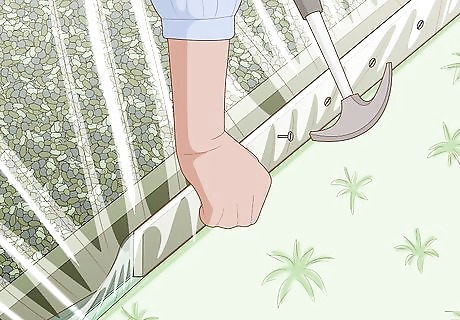
Seal the covering to the frame as closely as you can. You may be able to simply bolt film to wood. The more expensive the covering, such as glass, fiberglass, or double walled plastic, the more time you should take to seal it to the foundation and frame. Research the best procedure for the covering of your choice.
Controlling Temperature
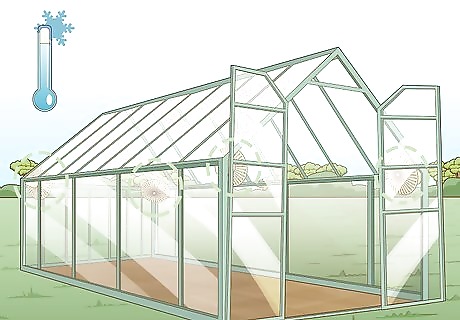
Place fans in the corners of the greenhouse. Set up fans so that they are diagonal and create a airflow. They should run almost constantly during the winter months, to ensure the entire greenhouse is benefiting from the heater.

Install vents in the ceiling of your greenhouse. They can also be located near the top of the supports. Some ventilation of carbon dioxide is essential. The vents should be adjustable. You will need to open them wider in the summer months.
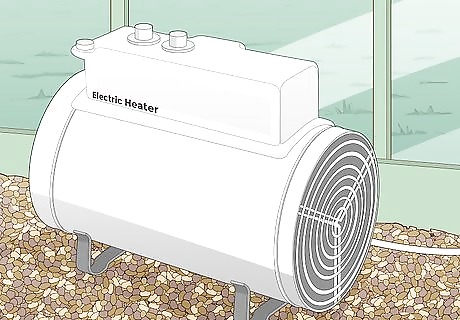
Consider installing an electric heater. Solar heat may only account for 25 percent of the heat in your greenhouse, so a backup heater is essential. You can also use a wood or oil-based heater, but it must be vented to the outside to ensure good air quality, carbon dioxide poising is a real danger to be looked out for in such a close space. You should check with your town or council to see what heating options are available in your area.
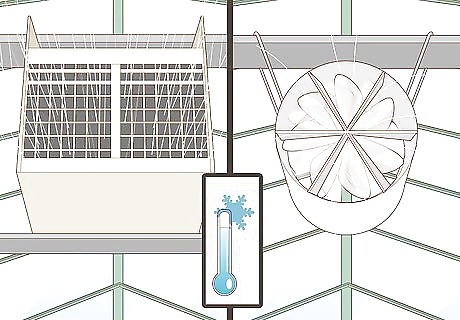
Install a forced-air system, if you are using a glass-frame greenhouse. If you can afford to outfit your greenhouse with its own temperature control system, then you can set it up to grow almost anything. Employ an electrician and a contractor to install your system. It may need regular maintenance to ensure it can handle ventilation and heating in the winter.
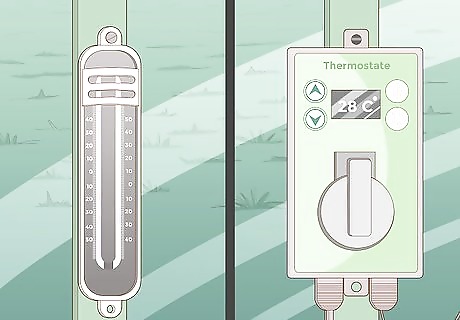
Install thermometers or thermostats. You should install several thermometers in case 1 breaks. Place them at different levels of the greenhouse so that you can observe the temperature in your greenhouse at all times. You can buy a thermometer that measures the temperature inside your house and inside your greenhouse, so that you can watch it closely during the winter months.
Additional Greenhouse Planning
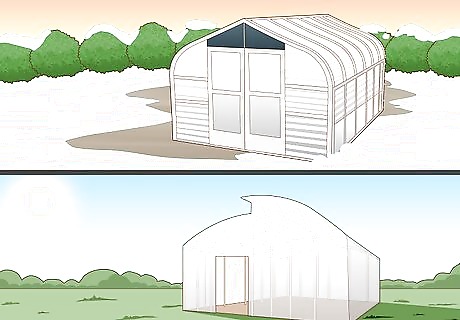
Study planting conditions for the plants you want to grow. The more sensitive the plant is to changes in heat, the less likely you will be able to grow other plants in the same section. A cool house is a greenhouse designed to keep plants from freezing. It is ideal for temporary greenhouses. A hot house is a greenhouse designed to keep plants in tropical temperatures. You will need to choose what the temperature will be and keep it steady. It is not possible to create different zones in an open greenhouse.
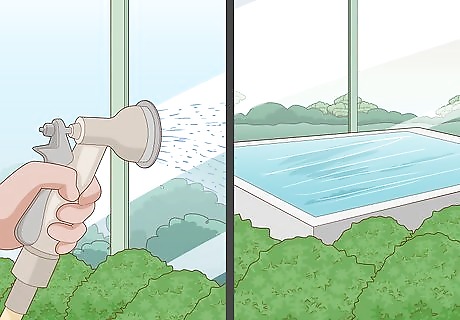
Ensure you have a steady water supply. Ideally it should be supplied by hose water and cisterns.
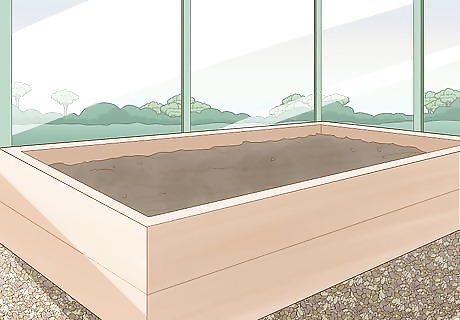
Construct raised beds inside your greenhouse. Slatted tables can be used in the meantime, since they will allow water to drain through the table and into the gravel. If possible, construct the beds to the primary gardener’s height to limit ergonomic problems.











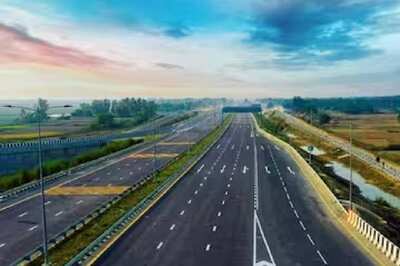







Comments
0 comment